The Bonda people, one of the oldest tribes in India, inhabit the remote hills of Orissa. With a population of approximately 7,000 people, they live in a mountainous and forest ecosystem that provides them with the necessary resources for their subsistence. Their economy is based mainly on subsistence agriculture, hunting and gathering. The social organization is hierarchical, with a council of elders that makes important decisions for the community, ensuring the transmission of their traditions and cultural norms.
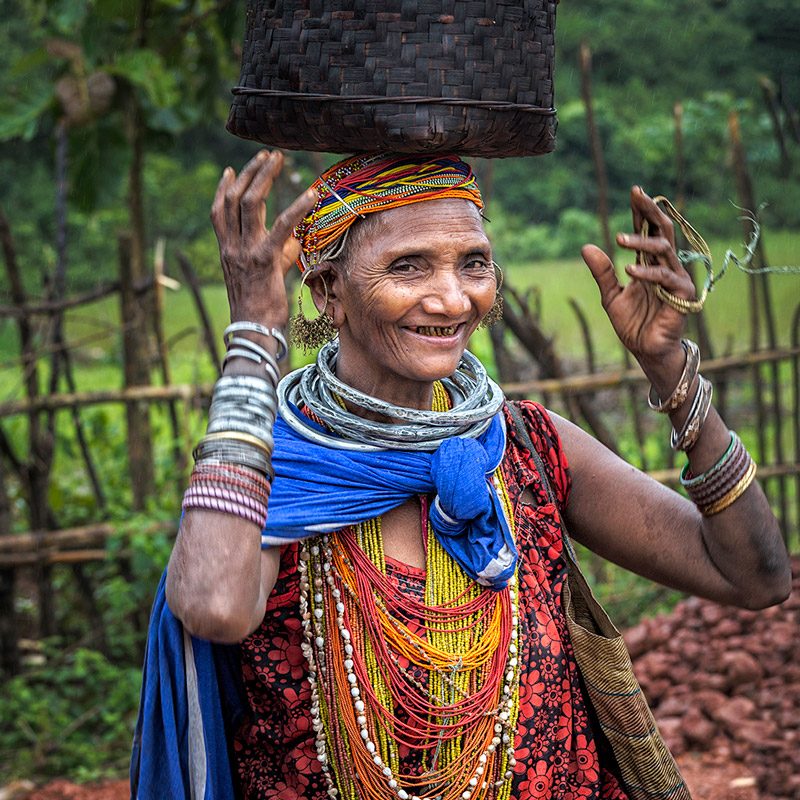
Art, Architecture and Urbanism of the Bonda people
The Bonda people live in small villages spread across Malkangiri and Koraput districts. Their villages are organized around communal spaces where ceremonies and meetings take place. Bonda architecture is characterized by mud and thatched roof houses, designed to adapt to the mountainous environment and climatic conditions. The art of the Bonda is expressed mainly through the creation of decorative tools and utensils, in addition to their colorful fabrics and jewelry.
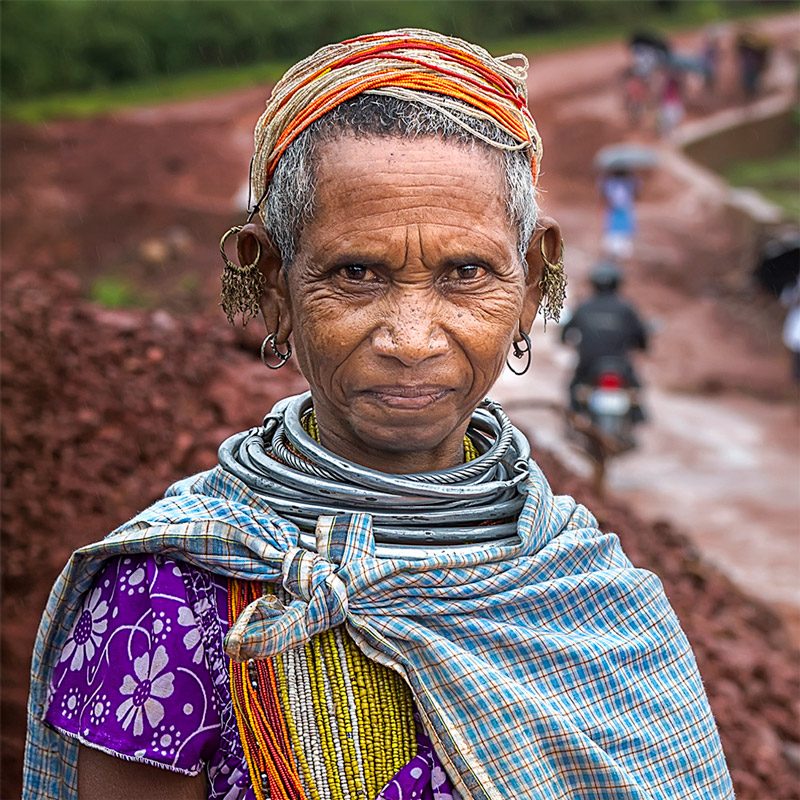
Aesthetic
The Bonda people are known for their distinctive aesthetics. The women wear short skirts and a type of poncho that covers the front part of their torso and is made up of a set of fine bead and shell necklaces. In addition, they wear thick metal necklaces, numerous bracelets and earrings in their ears and noses. Their heads are adorned with a cloth turban covered with beads, while the men traditionally wear a loincloth.
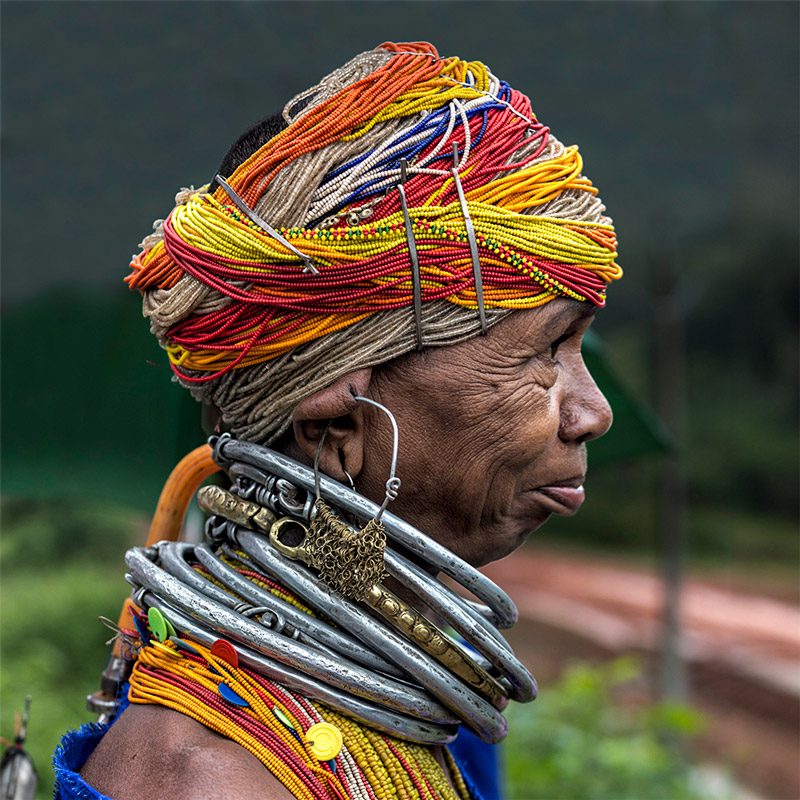
Do you want to meet the Bonda people?
Join Bego F. Colmeiro on his next trip to India from 4 to 18 December 2024 and meet the Bonda people. Click here for all the details of the trip.
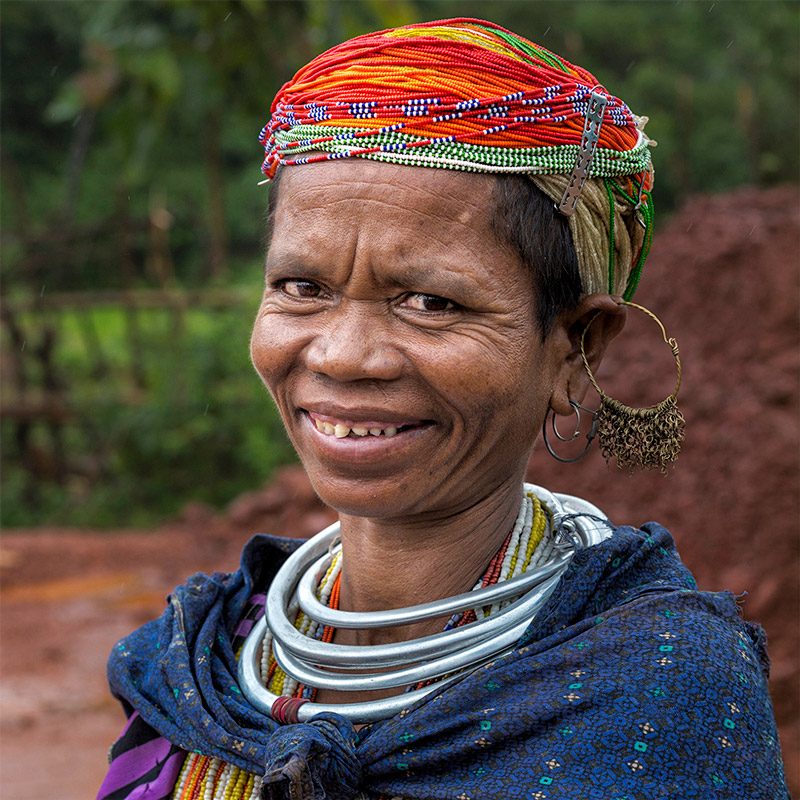
Religion
The religion of the Bonda people is animistic, focused on the worship of nature and ancestral spirits. They celebrate numerous festivals that mark agricultural seasons and honor their deities. The rituals are conducted by shamans, who act as intermediaries between the spiritual world and the community, ensuring the protection and well-being of their people.
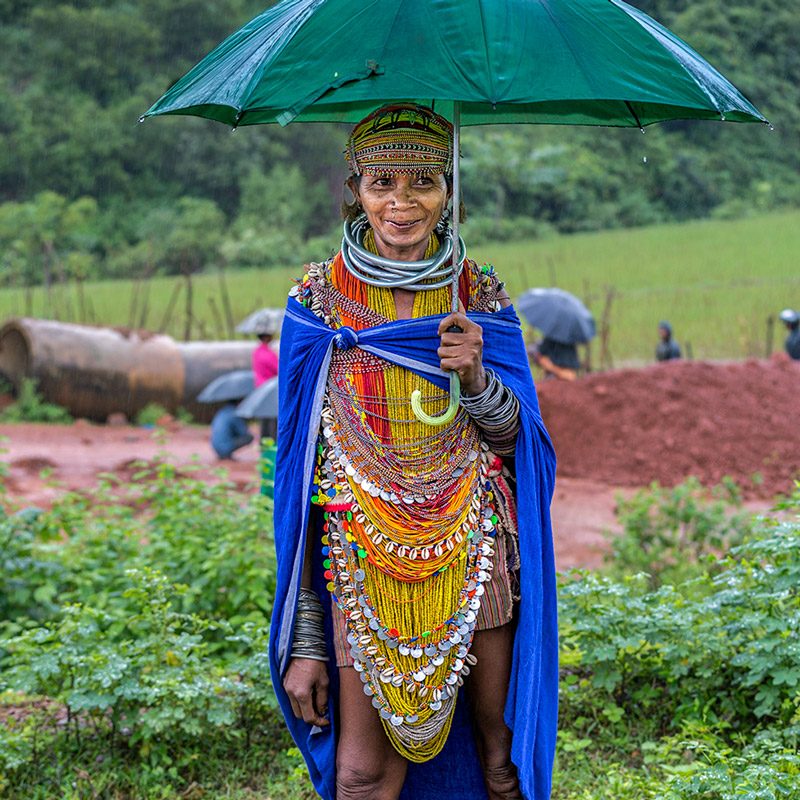
Challenges for the Bonda people
Over the past two centuries, the Bonda people have undergone significant changes, especially due to the impact of British colonization in India. Although their mountainous and difficult-to-access region provided them with some isolation, colonial policies affected their way of life. Today, the Bonda tribe continues to struggle to retain their cultural identity amid the pressures of development and globalization.
Defending their land rights and protecting their natural environment are essential to ensuring a sustainable future for this ancient tribe. The future of the Bonda tribe will depend on their ability to balance development with the conservation of their cultural heritage, ensuring that their rights are recognized and respected.
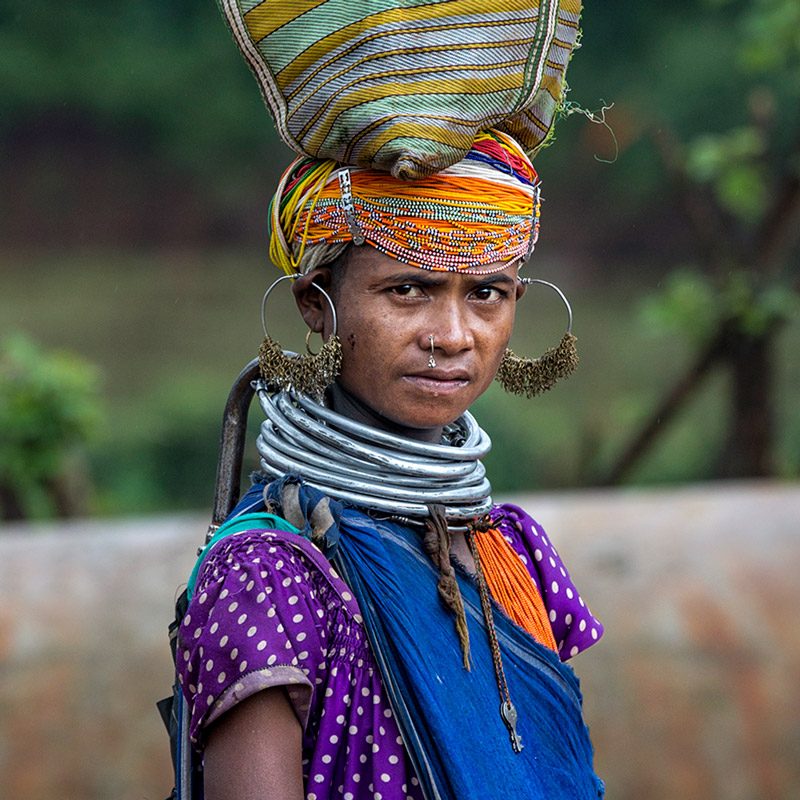
© Photos by Ana Robles taken during a trip to India.
